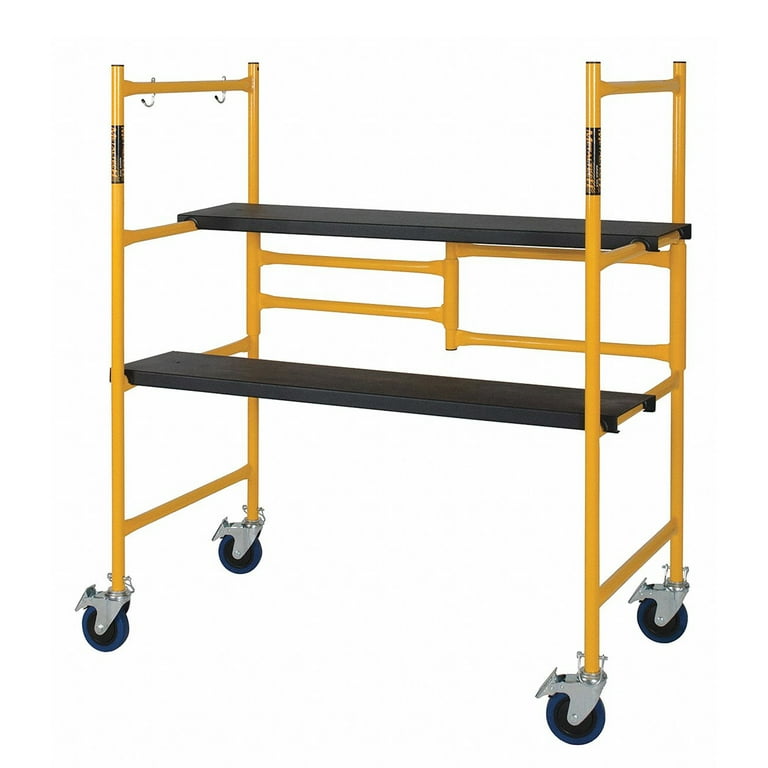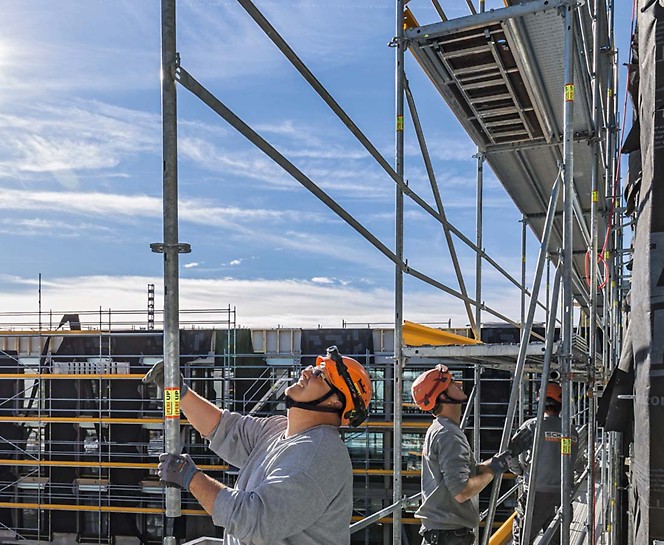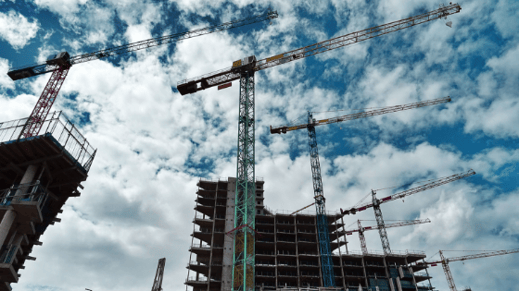Find Reliable Scaffolding Services in Surrey for Your Project Needs
Find Reliable Scaffolding Services in Surrey for Your Project Needs
Blog Article
Checking Out the Different Types of Scaffolding Utilized in Building And Construction Jobs
The construction sector depends heavily on numerous kinds of scaffolding to satisfy details project requirements, each offering distinctive advantages and applications. Traditional framework scaffolding provides a strong foundation for basic tasks, while put on hold scaffolding is crucial for service skyscraper structures. Various other options, such as system and rolling scaffolding, satisfy performance and flexibility, respectively. The cantilever variant verifies important in urban settings where space is constricted. Understanding the subtleties of these scaffolding kinds is vital for optimizing safety and efficiency on building websites, triggering a closer evaluation of their special characteristics and applications.

Traditional Frame Scaffolding
Traditional structure scaffolding is among the most widely made use of techniques in the construction market because of its robustness and adaptability. This system includes vertical and horizontal frames that are put together to create a steady platform for products and workers. The primary components include upright posts, horizontal ledgers, and diagonal dental braces, which together offer a solid framework that can sustain considerable lots.
Among the crucial advantages of standard frame scaffolding is its versatility to various building jobs, varying from household buildings to huge industrial structures. The modular layout enables very easy assembly and disassembly, making it efficient for both short-term and long-lasting jobs. Furthermore, the system can be personalized in height and size, fitting various building layouts and site conditions.
Safety is vital in scaffolding applications, and standard framework systems are furnished with guardrails and toe boards to avoid falls and make sure worker security. Normal assessments and adherence to safety and security laws are critical in preserving the honesty of the scaffold (Scaffolding). Generally, traditional framework scaffolding continues to be an essential choice in the building industry, supplying a reliable platform for labor and enhancing general job performance

Suspended Scaffolding
Put on hold scaffolding provides an one-of-a-kind option for construction jobs that require access to raised surface areas, particularly in circumstances where standard structure scaffolding may be unwise. This kind of scaffolding is typically put on hold from the roofing system or top degrees of a structure, using a system of pulleys, systems, and ropes to create a working space that can be adapted to numerous heights.
One of the main benefits of suspended scaffolding is its flexibility. It can be quickly rearranged or reduced to fit adjustments in construction requirements, making it ideal for jobs such as home window installment, frontage job, and maintenance on skyscrapers. Furthermore, the marginal impact of put on hold scaffolding enables much better usage of ground room in urban environments, where room is usually minimal.
Security is an important factor to consider in the use of suspended scaffolding. Generally, suspended scaffolding gives a effective and effective solution for accessing hard-to-reach locations in various building and construction scenarios, boosting both efficiency and safety and security on site.
System Scaffolding
System scaffolding, commonly regarded as a modern-day service in the scaffolding industry, is composed of pre-engineered components that can be promptly set up and adjusted for different construction tasks. Scaffolding. This sort of scaffolding is characterized by its modular design, which enables versatility and effectiveness on work websites, accommodating different elevations and structural requirements
Generally made from high-strength steel or light weight aluminum, system scaffolding offers improved resilience and stability. The elements consist of upright messages, horizontal ledgers, and angled dental braces, which interconnect firmly, ensuring a durable structure. The style commonly incorporates standardized fittings, streamlining assembly and disassembly procedures, therefore reducing labor time and expenses.

Rolling Scaffolding
Moving scaffolding is a flexible alternative to typical fixed scaffolding, developed for mobility and convenience of use on building and construction websites. This kind of scaffolding contains a platform sustained by frameworks with wheels, enabling workers to conveniently relocate it as needed. The click here to find out more mobility function considerably boosts productivity, as it minimizes downtime related to disassembling and setting up dealt with scaffolding.
Commonly built from light-weight materials such as light weight aluminum or steel, rolling scaffolding provides a tough yet portable remedy for tasks requiring regular repositioning - Scaffolding. It is specifically useful in tasks such as painting, drywall setup, and electrical job, where accessibility to various heights and locations is needed
Security is paramount in rolling scaffolding style, with functions such as locking wheels to avoid unplanned movement when in operation, and guardrails to protect workers from falls. Furthermore, several designs are flexible in elevation, suiting numerous project requirements.
Cantilever Scaffolding

The layout of cantilever scaffolding generally involves utilizing arms or braces anchored to a structure or framework, making it possible for the system to prolong external safely. Security is extremely important; thus, these scaffolds have to be engineered to hold up against numerous loads and environmental conditions. Routine inspection and upkeep are vital to make sure structural stability and employee safety and security.
Cantilever scaffolding is favored for its flexibility and reliable use room, making it a prominent choice in city environments where area restraints are typical. It promotes simpler accessibility to high altitudes, inevitably contributing to the general performance of construction projects. As with all scaffolding kinds, correct training and adherence to safety and security standards are vital for workers making use of cantilever scaffolding.
Verdict
To conclude, the diverse kinds of scaffolding utilized in building tasks each offer distinctive functions tailored to specific site requirements. Conventional framework scaffolding offers security, while put on hold scaffolding uses flexibility for raised tasks. System scaffolding assists in fast setting up, and rolling scaffolding boosts flexibility for differing job settings. Cantilever scaffolding efficiently deals with obstacles in urban settings. Comprehending these scaffolding kinds is necessary for maximizing security and efficiency in building, eventually adding to the website here successful completion of tasks.
Conventional frame scaffolding gives a strong foundation for basic jobs, while put on hold scaffolding is vital for work on skyscraper structures.Rolling scaffolding is a flexible alternative to typical set scaffolding, created for flexibility and convenience of use on construction sites. As with all scaffolding types, proper training and adherence to safety and security requirements are vital for employees using cantilever scaffolding.
Conventional structure scaffolding offers security, while suspended scaffolding supplies adaptability for elevated tasks. System scaffolding assists in quick setting up, and rolling scaffolding enhances wheelchair for varying job environments.
Report this page